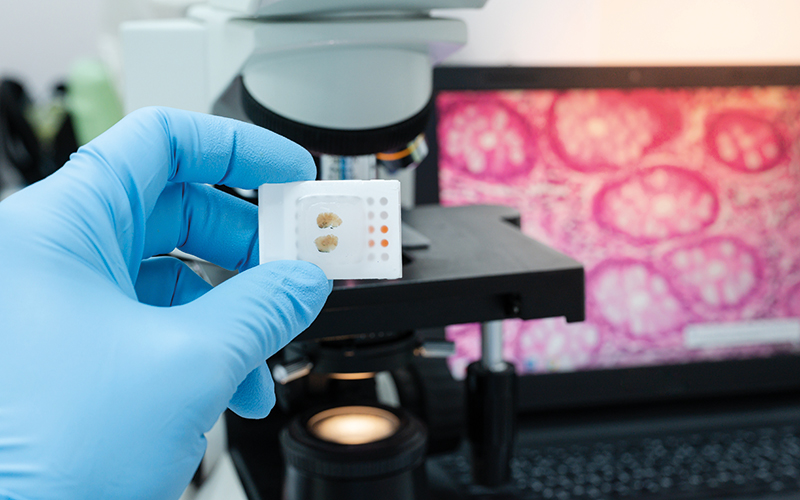A look at the new IBMS and Microsoft white paper Digital Pathology and Integrated Care Systems, which was launched in September.

Digital Pathology and Integrated Care Systems: Enabling high-quality, equitable digital pathology services across networks, ICSs and nationally outlines the advantages, trends and challenges of digital pathology. It explains the systems and processes involved, provides a road map towards regional digital pathology networks and outlines the role of the public cloud.
IBMS Chief Executive David Wells said: “It’s been excellent working with Microsoft on this round table and forward-looking white paper. If we can help companies that provide vast IT solutions to understand the needs of our services, we are one step closer to delivering the healthcare of the future.”
The white paper opens with an introduction to digital pathology and its promise of precision and productivity.
It says: “It is a revolutionary advance in the field of pathology that provides a more efficient, accurate and cost-effective way to diagnose, treat and monitor diseases.
“Digital pathology is currently transforming the way tissue samples are diagnosed, allowing for a more comprehensive analysis which leads to more precise and targeted treatments.”
The paper finishes with a combined vision to help advance the biomedical science workforce:
Our commitment to digital pathology
The IBMS, Microsoft and organisations represented by the authors of this paper believe that digital pathology has the potential to revolutionise the way pathology is practised. We commit to:
- Engage the public and the system. We will continue to communicate the benefits of digital pathology – in terms of quality, finance and staffing (particularly for the public and ICSs) – and promote and inform how it enables better, more efficient care.
- Continued focus on interoperability and standards. We will work to define standards, encourage conformance to standards and enable access to clinical data via those standards, including those defined by IHE (XDS, XCA, XCA-I).
- Standardised information governance policies. We will encourage the development of national standards for data governance relating to shared imaging services and appropriate access and permissions management, linked to clear technical specifications.
- Patient access to results. We will explore the value of providing access to pathology results directly with patients, helping empower the public while reducing the reporting burden on clinicians.
- Digital training. We will continue providing additional training to embed digital training for biomedical scientists and pathologists, to unlock the benefits of digitised laboratories and pathology services. We will also encourage and work with the royal colleges to develop learning and development opportunities.
- Education for ICSs on the systems in place. We will work together to help create a picture of the systems that are in place in different regions, and how those systems can better enable collaborative working for pathology and other clinical specialties.
The paper can be download by visiting bit.ly/3Ram4ZU
Image credit | Shutterstock




